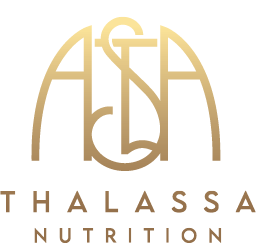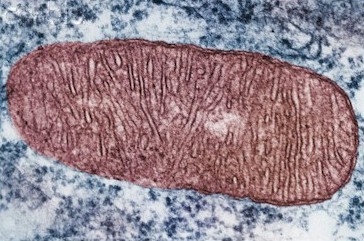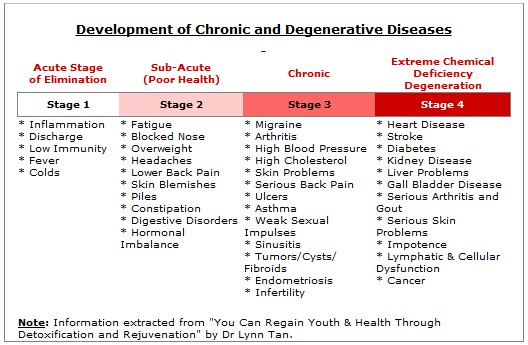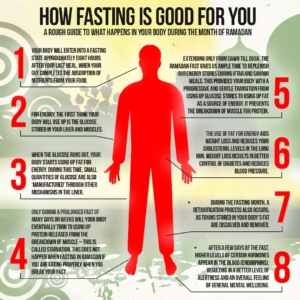Cannabis Can Kill 9 Types Of Cancer
The truth about the healing powers of cannabis is starting to see the light of the day in many parts of the world.
Cannabis or better known as marijuana has been used as a remedy for many centuries. Today, it is known that the reason lies in the compounds found in cannabis called cannabinoids. Some of them are psychoactive and act on the brain by changing mood or consciousness. They can be taken by mouth, inhaled, or sprayed under the tongue.
They have been studied and tested in labs and clinics for relieving pain, nausea and vomiting, anxiety, and loss of appetite. The U.S. Food and Drug Administration (FDA) have approved two cannabinoids (dronabinol and nabilone) for the prevention or treatment of chemotherapy related nausea and vomiting.
According to Christina Sanchez, a molecular biologist from Compultense University in Madrid, Spain, who has been studying the molecular activity of cannabinoids for more than 10 years, tetrahydrocannabinol, or THC, the primary psychoactive component of cannabis, induces tumor cell “suicide” while leaving healthy cells alone. During a study where they researched brain cancer cells for the purpose of better understanding how they function, they noticed that when exposed to THC, tumoral cells not only ceased to multiply and proliferate but destroyed themselves, both in lab tests and animal trials.
A 1980s’ research revealed that the human body contains two specific targets for THC. The endocannabinoid system processes THC and other cannabinoids, along with containing various cannabinoid receptors throughout the body that utilize them. This system regulates a lot of biological functions: appetite, food intake, motor behavior, reproduction, and many, many other functions. Tests done on mice and rats have shown that cannabinoids help to inhibit tumor growth by causing cell death, blocking cell growth, and the development of blood vessels needed by tumors to grow larger.
Cannabis has great benefits in fighting, so far, nine types of cancer.
Brain cancer
The journal Molecular Cancer Therapeutics published a study that outlines how brain tumors are highly resistant to current anticancer treatments, which makes it crucial to find new therapeutic strategies aimed at improving the poor prognosis of patients suffering from this disease.
The British Journal of Cancer published a study conducted by the Department of Biochemistry and Molecular Biology at Complutense University in Madrid, where it was determined that THC and other cannabinoids inhibit tumor growth. THC was found to decrease tumour cells in two out of the nine patients, and the delivery was safe and was achieved with zero psychoactive effects.
The Journal of Neuroscience published a study that examined the biochemical events in both acute neuronal damage and in slowly progressive, neurodegenerative diseases. They looked at THC and found that it reduced neuronal injury in rats, and provide evidence that the cannabinoid system can protect the brain against neurodegeneration.
The Journal of Pharmacology And Experimental Therapeutics published a study that already acknowledged the fact that cannabinoids have been shown to possess antitumor properties. This study examined the effect of cannabidiol (non psychoactive cannabinoid compound) on human glioma cell lines (Glioma is the word used to describe brain tumor). The addition of cannabidiol led to a dramatic decrease in the viability of glioma cells, the study concluded that cannabidiol was able to produce a significant antitumor activity.
Pancreatic cancer
The American Journal of Cancer published a study where it was determined that cannabinoid receptors are expressed in human pancreatic tumor cell lines and tumor biopsies at much higher levels than in normal pancreatic tissue. Results showed that cannabinoid administration induced apoptosis. They also reduced the growth of tumor cells, and inhibited the spreading of pancreatic tumor cells.
Breast cancer
The US National Library of Medicine published a study conducted by the California Pacific Medical Centre, where it was determined that cannabidiol (CBD) inhibits human breast cancer cell proliferation and invasion. They also demonstrated that CBD significantly reduces tumor mass.
The Journal of Pharmacology and Experimental Therapeutics published a study where it was determined that THC as well as cannabidiol dramatically reduced breast cancer cell growth.
The Journal Molecular Cancer published a study where it was shown that THC reduced tumor growth and tumor numbers. They determined that cannabinoids inhibit cancer cell proliferation, induce cancer cell apoptosis and impair tumor angiogenesis (the creation of new blood vessels), providing strong evidence for the use of cannabinoid based therapies for the management of breast cancer.
The Proceedings of the National Academy of Sciences of the United States of America (PNAS) published a study that determined that cannabinoids inhibit human breast cancer cell proliferation.
Lung cancer
The journal Oncogene published a study by Harvard Medical Schools Experimental Medicine Department that determined that THC inhibits epithelial growth factor induced lung cancer cell migration and more. They go on to state that THC should be explored as novel therapeutic molecules in controlling the growth and metastasis of certain lung cancers.
The US National Library of Medicine published a study conducted by Harvard Medical School investigated the role of cannabinoid receptors in lung cancer cells. They determined its effectiveness and suggested that it should be used for treatment against lung cancer cells. They also published a study by the by the Institute of Toxicology and Pharmacology, from the Department of General Surgery in Germany where it was determined that cannabinoids inhibit cancer cell invasion. Effects were confirmed in primary tumor cells from a lung cancer patient. Overall, data indicated that cannabinoids decrease cancer cell invasiveness.
Liver cancer
The US National Library of Medicine published a study that determined that THC reduces the viability of human HCC cell lines (Human hepatocellular liver carcinoma cell line) and reduced the growth.
Blood cancer
Again, the US National Library of Medicine published a study conducted by the Department of Pharmacology and Toxicology by Virginia Commonwealth University that determined that cannabinoids induce apoptosis in leukemia cells.
The journal Molecular Pharmacology published a study where it was shown that cannabinoids induce growth inhibition and apoptosis in mantle cell lymphoma. The study was supported by grants from the Swedish Cancer Society, The Swedish Research Council and the Cancer Society in Stockholm.
The International Journal of Cancer published a study where it was determined and illustrated that cannabinoids exert antiproliferative and proapoptotic effects in various types of cancer and in mantle cell lymphoma.
Prostate cancer
The US National Library of Medicine published a study that proved the effectiveness of cannabis on prostate cancer.
Another study they published illustrates a decrease in prostatic cancer cells by acting through cannabinoid receptors.
And another one determined that clinical testing of CBD against prostate carcinoma is a must, as cannabinoid receptor activation induces prostate carcinoma cell apoptosis (cell death).
Oral cancer
The US National Library of Medicine published a study whose results show cannabinoids are potent inhibitors of cellular respiration and are toxic to highly malignant oral Tumors.
Colon cancer
A study in mice showed that cannabinoids may protect against inflammation of the colon and have some potential in reducing the risk of colon cancer.
Aiding chemotherapy
According to a laboratory study of cannabidiol (CBD) in human glioma cells, when given along with chemotherapy, CBD made the chemo more effective, and increased cancer cell death without harming the normal cells. Studies in mouse models of cancer showed that CBD together with delta-9-THC may make chemotherapy such as temozolomide more effective.
Cannabis also has anti-inflammatory properties, antiviral properties and relieves muscle spasms caused by multiple sclerosis.


 Here is what a mitochondrion from our cell looks like. There are many of these within one single cell. This is the power source of our energy.
Here is what a mitochondrion from our cell looks like. There are many of these within one single cell. This is the power source of our energy.
 I can’t stress enough the importance of drinking enough water.
I can’t stress enough the importance of drinking enough water.
 Considered by many as a staple in any serious kitchen, olive oil has also achieved mythic stature as the ultimate healthy ingredient, protecting us from heart disease.
Considered by many as a staple in any serious kitchen, olive oil has also achieved mythic stature as the ultimate healthy ingredient, protecting us from heart disease. To evaluate whether or not olive oil is indeed ‘heart-healthy’, we first need to understand a few facts about vascular biology.
To evaluate whether or not olive oil is indeed ‘heart-healthy’, we first need to understand a few facts about vascular biology. Not surprising, significant FMD impairment can be seen after someone smokes or eats a lot of fat, sugar and/or salt in a meal. FMD impairment is also detected when someone suffers from mental stress or a chronic disease like high cholesterol or diabetes.
Not surprising, significant FMD impairment can be seen after someone smokes or eats a lot of fat, sugar and/or salt in a meal. FMD impairment is also detected when someone suffers from mental stress or a chronic disease like high cholesterol or diabetes. In a cohort study designed to measure the effects of a Mediterranean diet as the primary prevention of cardiovascular disease, extra virgin olive oil (EVOO) was shown to be better than regular olive oil, but neither significantly reduced heart attack rates.
In a cohort study designed to measure the effects of a Mediterranean diet as the primary prevention of cardiovascular disease, extra virgin olive oil (EVOO) was shown to be better than regular olive oil, but neither significantly reduced heart attack rates. It appears that the low heart disease rate associated with a Mediterranean diet is in spite of olive oil—not because of it!
It appears that the low heart disease rate associated with a Mediterranean diet is in spite of olive oil—not because of it! Atherosclerosis is the narrowing of blood vessels due to the buildup of waxy ‘plaques’ – clumps of fat and debris – along the vessel walls. The vessels become narrow and rigid, causing the heart to have to work harder to deliver oxygen to our bodies and increasing the risk of heart attacks. To make matters worse, the fat in the plaques is easily oxidized, releasing dangerous free radicals that further damage blood vessels.
Atherosclerosis is the narrowing of blood vessels due to the buildup of waxy ‘plaques’ – clumps of fat and debris – along the vessel walls. The vessels become narrow and rigid, causing the heart to have to work harder to deliver oxygen to our bodies and increasing the risk of heart attacks. To make matters worse, the fat in the plaques is easily oxidized, releasing dangerous free radicals that further damage blood vessels. Many argue that olive oil is a better alternative than other saturated fats. While there is some truth to this (olive oil does appear to cause relatively less damage than saturated animal fats), it is important to note that ‘less damage’ is still damage.
Many argue that olive oil is a better alternative than other saturated fats. While there is some truth to this (olive oil does appear to cause relatively less damage than saturated animal fats), it is important to note that ‘less damage’ is still damage.